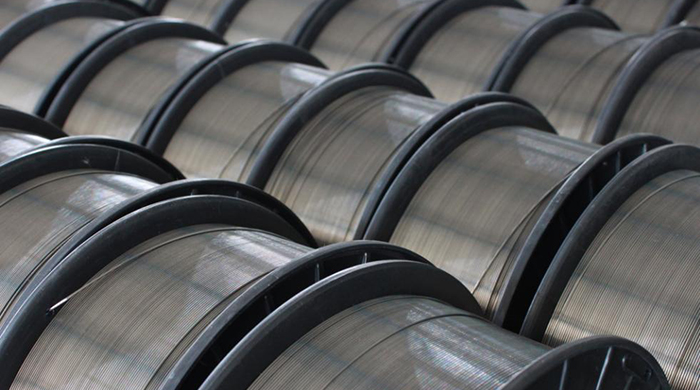Introduction
In the world of manufacturing and precision machining, Electrical Discharge Machining (EDM) has revolutionized the way we create intricate and complex parts. EDM is a non-traditional machining process that relies on electrical discharges to remove material from a workpiece. At the heart of this remarkable technology lies the EDM wire, a crucial component that plays a pivotal role in the machining process. In this article, we will delve into the various types of EDM wires, their applications, and the latest advancements in EDM wire manufacturing.
I. Types of EDM Wires
EDM wires come in different varieties to suit specific machining needs. Here are some common types:
1. **Brass Wires**
- *Composition*: Brass wires are made primarily of copper and zinc, with small amounts of other alloys. The composition can vary to meet different EDM requirements.
- *Applications*: Brass wires are versatile and used in a wide range of applications. They are particularly well-suited for general-purpose EDM machining of conductive materials, including steel, aluminum, and titanium.
- *Advantages*: Brass wires offer excellent cutting performance, good conductivity, and stability during machining.
2. **Coated Wires**
- *Composition*: Coated wires have a core made of high-strength material, such as tungsten or molybdenum, which is coated with a thin layer of brass or zinc.
- *Applications*: Coated wires are ideal for applications that demand high precision and surface finish, such as aerospace and medical device manufacturing.
- *Advantages*: The combination of a strong core and a brass or zinc coating provides enhanced cutting performance and improved precision.
3. **Diamond Wires**
- *Composition*: Diamond wires are equipped with a diamond-like carbon (DLC) coating, making them exceptionally durable.
- *Applications*: Diamond wires are often used for cutting or shaping extremely hard and brittle materials, such as ceramics, carbides, and sapphire.
- *Advantages*: Their outstanding hardness and wear resistance make diamond wires suitable for demanding applications.
4. **Molybdenum Wires**
- *Composition*: Molybdenum wires are made of pure molybdenum, a high-melting-point metal.
- *Applications*: Molybdenum wires are commonly used in wire-cut EDM for specialized applications like aerospace, electronics, and micro-machining.
- *Advantages*: They can withstand high temperatures, making them suitable for cutting materials that require a lot of heat during the machining process.
II. Applications of EDM Wires
The choice of EDM wire type depends on the specific requirements of the machining task. Here are some common applications:
1. **Die and Mold Manufacturing**
- EDM wires are indispensable in the production of dies and molds for various industries, including automotive and plastic injection molding. High precision and intricate details are often required in this field.
2. **Aerospace Industry**
- Aerospace components demand exceptional precision and reliability. Diamond-coated EDM wires are frequently used to shape and cut materials like titanium and Inconel for aircraft parts.
3. **Medical Device Manufacturing**
- The medical industry relies on EDM wires for the production of intricate and biocompatible components. Coated wires are favored for their precision in this sector.
4. **Electronics**
- EDM wires are used in the fabrication of micro-electromechanical systems (MEMS), semiconductors, and electronic connectors, where precision and fine details are critical.
5. **Automotive Sector**
- Automotive manufacturers use EDM wires for producing engine components, transmission parts, and injection molds, where high precision and tight tolerances are essential.
III. Advancements in EDM Wire Manufacturing
The EDM wire industry is continuously evolving to meet the increasing demands of precision machining. Here are some recent advancements:
1. **Nanostructured Wires**
- Researchers have developed nanostructured EDM wires with enhanced mechanical properties and higher electrical conductivity. These wires enable more efficient machining of advanced materials.
2. **Smart Wire Technologies**
- Some companies are incorporating smart technologies into EDM wires. These wires can monitor their own wear and performance, allowing for real-time adjustments and optimization during machining processes.
3. **High-Speed Wires**
- High-speed EDM wires are designed to increase machining efficiency by reducing cutting times. These wires are becoming increasingly popular in industries where time-sensitive production is crucial.
4. **Eco-Friendly EDM Wires**
- Manufacturers are developing EDM wires with environmentally friendly coatings and materials, reducing the environmental impact of the machining process.
Conclusion
In the world of manufacturing, EDM wires play a vital role in achieving precision, quality, and efficiency in the machining of intricate and complex components. Understanding the various types of EDM wires and their applications is essential for manufacturers seeking to optimize their machining processes. With continuous advancements in EDM wire technology, the future holds exciting possibilities for even more efficient and sustainable precision machining.



